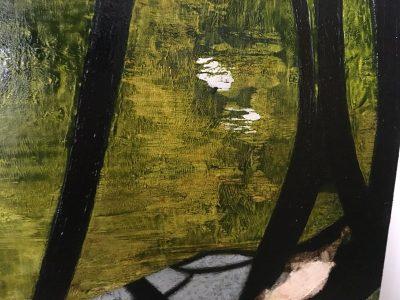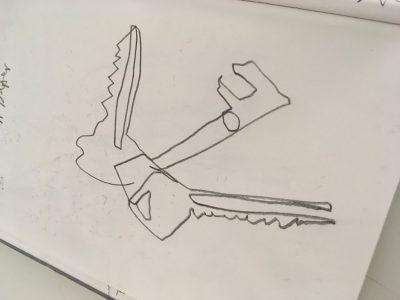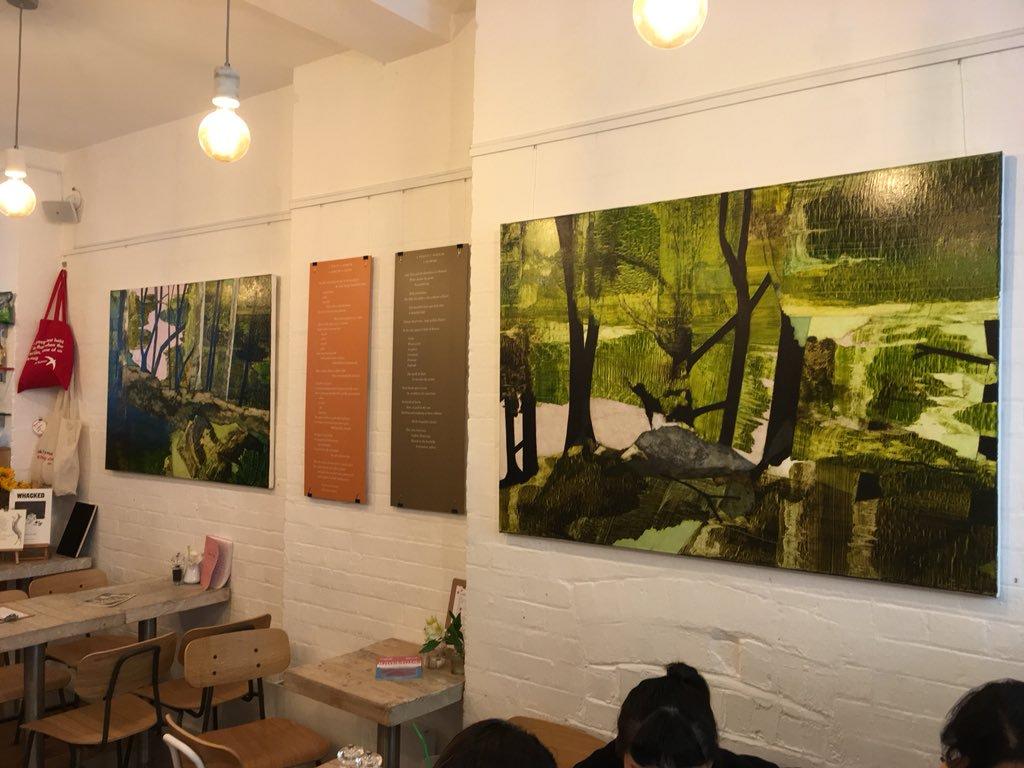The current painting and poetry exhibition at the Poetry Society draws on Dorothy Wordsworth’s Grasmere Journal. Zoe Benbow (visual artist) and Sarah Corbett (poet) have collaborated on a reverie about women doing local walking in the landscape. The exhibition is about an inner world with inner landscapes.
I went to an inspirational workshop on this. We started by alternating between meditation and observation / creation. Meditation draws on the physical: on being in your body, on coming into your body. It’s not about modern moneymaking mindfulness but, rather, making a connection with nature. Which is really what a lot of painting and poetry are all about.
Painting and poetry are about word / visual gathering and sensory detail. Cutting is the most difficult – and necessary – bit of it all

We tried: observation of Zoe’s paintings; listening to the sounds around us; taking a kinaesthetic approach to what is going on
We were told to forget logic.
And reminded of how shamanic practice shocks you into another place, and thereby alerts you to the ‘regular’ world.
We tried writing about a journey which was personally important.
More prosaically, we drew our own keys: from above, from eye-level, and diagrammatically using words and naming in a visual ‘pattern’. This was as a reminder that you can start with anything – creativity is already within you

The keys acted as both a point of departure, and somewhere to arrive.
We discussed:
>> Practice is failure
Since the next one can always be better than the last one
>> Putting things together makes new ideas in painting and poetry – that third thing acts as an active principle to inspire more new ideas
>> Working on painting and poetry becomes a process, as more new things are found along the way
Then we tried: writing about a first journey / early memory.
I wrote about walking back from school through a beech forest – having been picked up by someone I barely knew. As we walked, I was pleased and excited to feel as though I was being treated as an adult. Eventually, though, we realised that we were both following each other and were lost. The adult who had collected me was trying hard not to panic about losing a child in a forest But now I truly did act as an adult: sensibly and to get us out of this particular situation. Then when we got back to my mother, the ‘adult’ took all the adult-credit. And I let him do that, in a very adult way.
Then we all converted our written stories into drawn story maps.
On which we overlaid some found poetry. I ‘found’ a perfect paragraph about the downs east of Storrington from McFarlane’s ‘The old ways’
Somewhere in all this Zoe talked about how there are five elements to all painting and poetry / stories:
- Memory of the past
- Mood or day-to-day experience
- The moment of making
- Materials: today we were limited, but there is colours for painting and vocabulary for writing
- Art history or literary antecedents: what has gone before in terms of culture and geography and location
Both painting and poetry are layered labyrinths, folding back on themselves,
